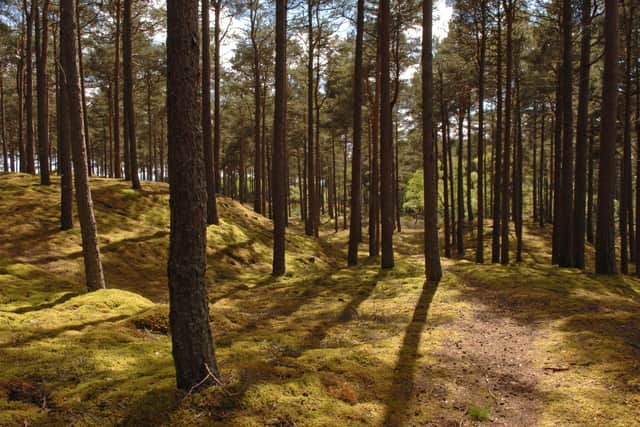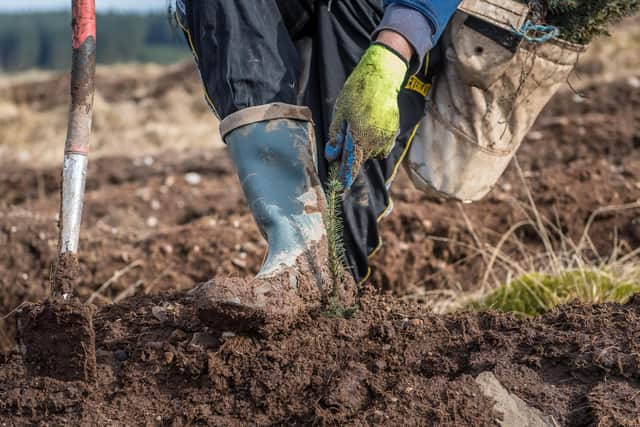Scotland misses tree-planting target due to impact of destructive storms on forests
Official figures released today show just under 80 per cent of the target amount of new woodland was created in the past 12 months – covering a total of 10,480 hectares.
This falls short of the 13,500 hectares required to meet the recently raised 2021/22 goal.
Advertisement
Hide AdAdvertisement
Hide AdHowever, the statistics show the quantity of native tree species planted exceeded the 4,000 hectares demanded – with an extra 360 hectares established.
The coverage means the vast majority of woodlands created across the UK over the period were planted in Scotland – 2,260 hectares were planted in England, 580 in Wales and 540 in Northern Ireland.
National agency Scottish Forestry had signed off on plans that would have seen enough new planting to hit the target, but a series of major storms – including Arwen, which struck in November last year, bringing down around 16 million trees – saw private and public foresters having to stop planting to deal with emergency work.
Data shows that the majority of shortfalls were spread across Grampian, south Scotland and Perthshire, the areas hardest-hit by the extreme weather.


The figures have been met with a mixture of disappointment and optimism.
Environment minister Mairi McAllan said: “Over the last four years Scotland has consistently created over 10,000 hectares of new woodland each year.
“This has been achieved during the challenges caused by Brexit, the global Covid pandemic, and the worst winter storms for over 10 years.
“Whilst it is disappointing that we have not met this year’s target, mother nature dealt us a salutary lesson of the power of the weather and reminded us of the challenges of climate change.
Advertisement
Hide AdAdvertisement
Hide Ad

“Even now, clear-up operations from the storms are continuing so it is no surprise that they had an effect on tree planting operations.
“It is good news that we have comfortably met our native woodland target and Scotland is punching above its weight in creating over three quarters of all the UK’s new woodlands.
“The future is also looking very encouraging as there is a very healthy demand for woodland creation projects in the pipeline.”
Conservationists have welcomed the success for native tree-planting, which made up 42 per cent of the overall mix.
Arina Russell, public affairs manager for Woodland Trust Scotland, said: “Today’s figures clearly show targets can be met. We now need to go further and faster.”
Industry leaders say the results show Scotland is beginning to reap the economic and environmental benefits of tree planting, while UK government policy is proving “a total economic and environmental failure”.
Stuart Goodall, chief executive of Edinburgh-based forestry and wood trade body Confor, said: “Scotland is leading the way in the UK in planting more trees and using more wood because it understands what modern, mixed-species and multi-purpose forests deliver – stronger rural economies, faster progress towards net-zero targets, flood mitigation, biodiversity benefits, better recreational opportunities for people, and much more.”
He said the statistics demonstrate that ambitious targets are achievable and the interest is there, but lessons must be learned for future plans.
Comments
Want to join the conversation? Please or to comment on this article.
